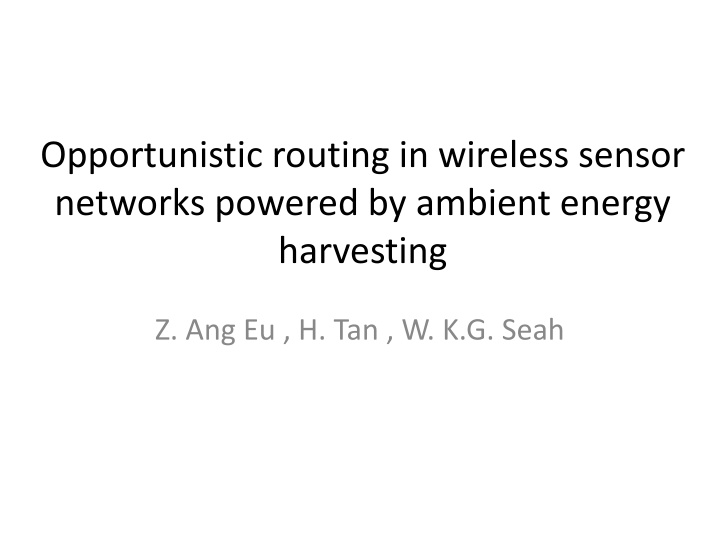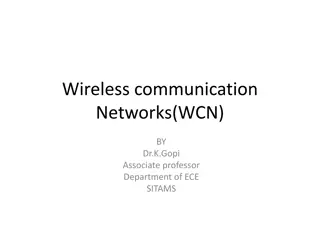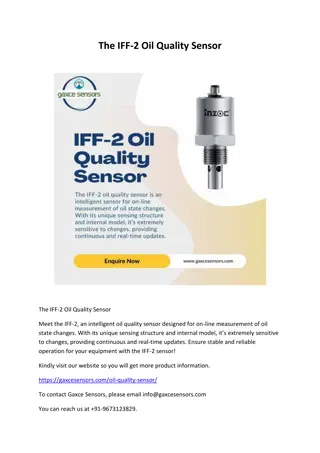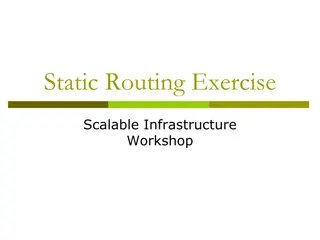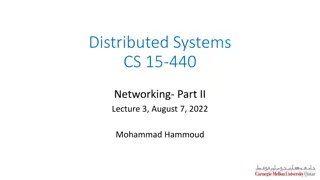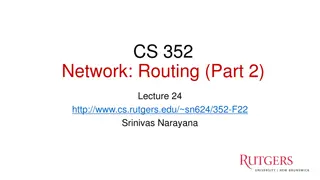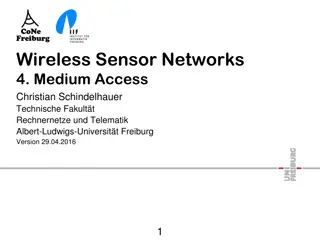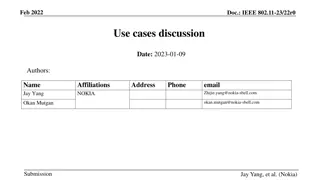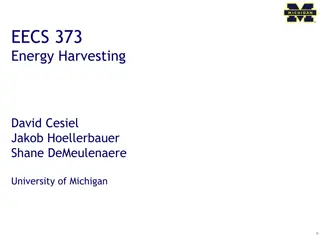Energy Harvesting Opportunistic Routing in Wireless Sensor Networks
Extending the lifetime of wireless sensor networks by harnessing ambient energy sources through opportunistic routing protocols. EHOR enhances efficiency and goodput compared to traditional routing methods, particularly in WSNHEAP environments. The protocol optimizes energy usage and data delivery by partitioning nodes, prioritizing transmissions, and maximizing system performance based on key principles.
Download Presentation

Please find below an Image/Link to download the presentation.
The content on the website is provided AS IS for your information and personal use only. It may not be sold, licensed, or shared on other websites without obtaining consent from the author.If you encounter any issues during the download, it is possible that the publisher has removed the file from their server.
You are allowed to download the files provided on this website for personal or commercial use, subject to the condition that they are used lawfully. All files are the property of their respective owners.
The content on the website is provided AS IS for your information and personal use only. It may not be sold, licensed, or shared on other websites without obtaining consent from the author.
E N D
Presentation Transcript
Opportunistic routing in wireless sensor networks powered by ambient energy harvesting Z. Ang Eu , H. Tan , W. K.G. Seah
Outline Introduction Purpose System model Protocol Compare Conclusion
Intoduction To Extending network Lifetime. The finite energy sources (e.g. Batteries) will restrict to lifetime. Using ambient energy harvesting technologies. Make it possible for sensor nodes to rely on energy harvesting devices for power. (i) Power from environment(e.g. Solar, Wind .) (ii) Without human intervention to change batteries. (iii) Perpetually using.
Purpose EHOR increases goodput and efficiency. Compared to traditional opportunistic routing protocols and other non-opportunistic routing protocols suited for WSN HEAP (Sensor networks powered by ambient energy harvesting).
WSNHEAP node Once the stored energy reaches an useful level, the node will be operable. During the charging phase, the node is idle. the wakeup timings of the sensor nodes cannot be predicted in advance because the time required to charge up the sensor node fully is dependent on environmental factors.
Types of Node Relay, Source and Sink nodes Node Status: charging, receive and transmit
Energy Harvesting Opportunistic Routing Protocol (EHOR) (i) Partitions nodes into regions. region-based approach by grouping nodes together to reduce delay and increase goodput. (ii) Assigns transmission priorities to regions, taking into consideration proximity to the sink and residual energy.
Principle(1/2) Maximize goodput: increase (i) the number of WSN HEAP nodes or (ii) the average energy harvesting rate (by using better energy harvesters). Maximize data delivery ratio: minimizing the number of lost packets. Maximize efficiency: minimize the number of duplicate packets to sink.
Principle(2/2) Maximize fairness: Jain s fairness metric Gi : goodput of ith sensor node ns : number of sensor nodes If the sink receives the same amount of data from all the sensor nodes, F is 1. If the sink receives data from only one node, then F 0 as n
Regioning in EHOR Determine the best forwarding candidates to forward the data packets while minimizing coordination overheads and duplicate transmissions. Challenge: we cannot determine the exact identities of nodes that are awake at any time. => EHOR divides the possible set of forwarding neighbors into several regions.
Region ID Forwarding region(between sender and sink) K is number of region n1:Number of node is a region d :maximum transmission range X :Length of area P :probability that a node receives a packet ttx trmax: Maximum time in the receive state tta : Hardware turnaround time from receive to transmmit state E[Tc]: Average charging time : Time to send a packet
Region Priority Determine the transmission priority.
Joint the residual energy Ere: Remaining energy of the node at the end of the packet reception from the sender Eta:Energy required to change state (from receive to transmit) Etx:Energy required to send a data packet Prx:Power needed when the sensor is in receive state
Choose Efficiency (g) is the ratio of goodput (G) to throughput (T) Use Qualnet network simulator to assess the performance Choose =0.6
Algorithm(2/2) Node can only wait for 3 time slots. If node in R4, it has to drop the data packet since it has insufficient energy to wait for the 4th time slot to transmit. If node in R1, it will transmit the data packet immediately upon receiving the data packet. If node in R3, it will wait for 2 time slots in order to overhear whether other nodes in R1 and R2 have relayed the data packet. If it overhears that the data packet has already made progress towards the sink, the node will not relay the data packet.
Compare- OR Opportunistic routing (OR) (1) Regioning helps to improve performance by grouping (2) By considering residual energy, each WSN HEAP node has a higher probability of forwarding the received packet, thereby increasing goodput.
Compare- GR-DD Geographic Routing with Duplicate Detection (GR DD) (1) The receive period is fixed in GR DD but is variable in EHOR, thereby reducing the number of MAC collisions through using less transmissions and utilizing more long-distance links.
(2) GRDD needs non-volatile memory as packets received need to be stored in the buffer for transmission in future. (3)Unlike EHOR, GR DD is not an opportunistic routing protocol since it does not attempt to overhear whether the packet has already made progress before transmission.
Compare- WSF Wakeup Schedule Function(WSF) (1) A successful data transmission requires the reception of three packets: the beacon packet, the data packet and the ACK packet. there would be duplicate packets since the sender has to retransmit the packet to possibly another forwarder. For EHOR, only the reception of the data packet. (2)EHOR, like other OR schemes in general, uses the broadcast nature of the wireless medium to send the packets to as many forwarding nodes as possible while WSF uses unicast routing.
single-source n = 20 300, ns = 1
varying number of source nodes n = 300, ns = 20 300
Conclusion Use a regioning approach to group nodes together in EHOR to reduce delay and improve goodput Improve EHOR s performance by taking into consideration the amount of residual energy in each node in EHOR achieves high goodput, efficiency, data delivery ratio and fairness.
